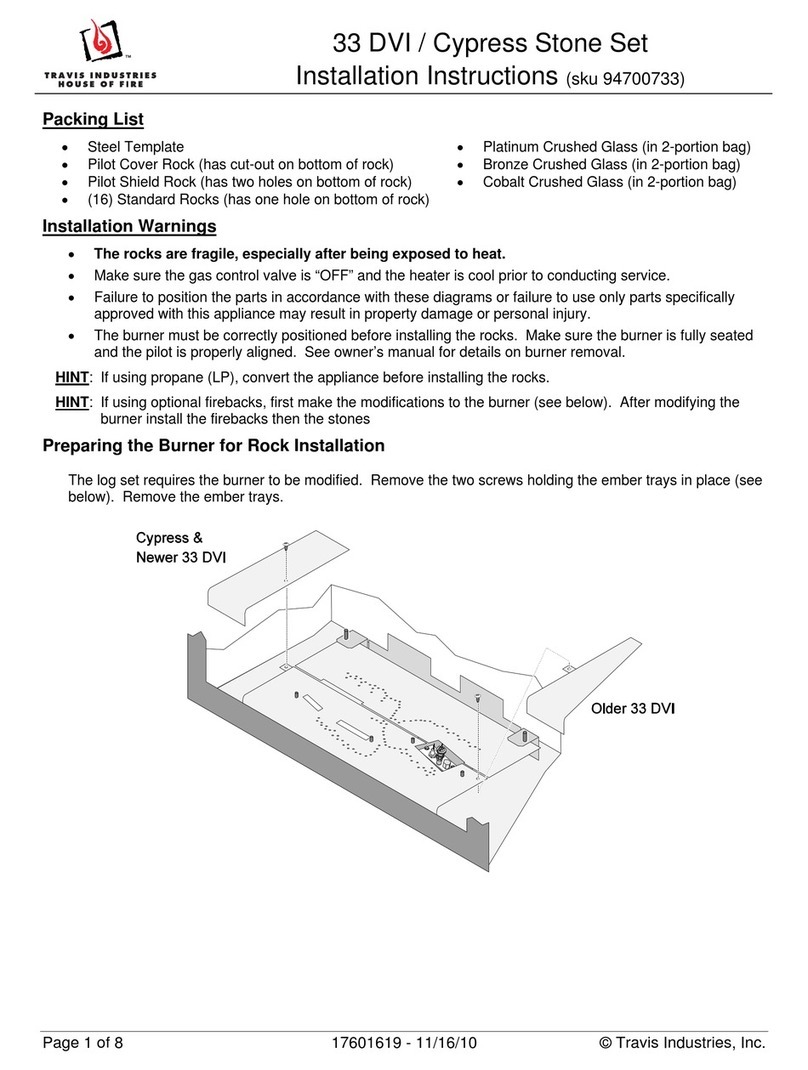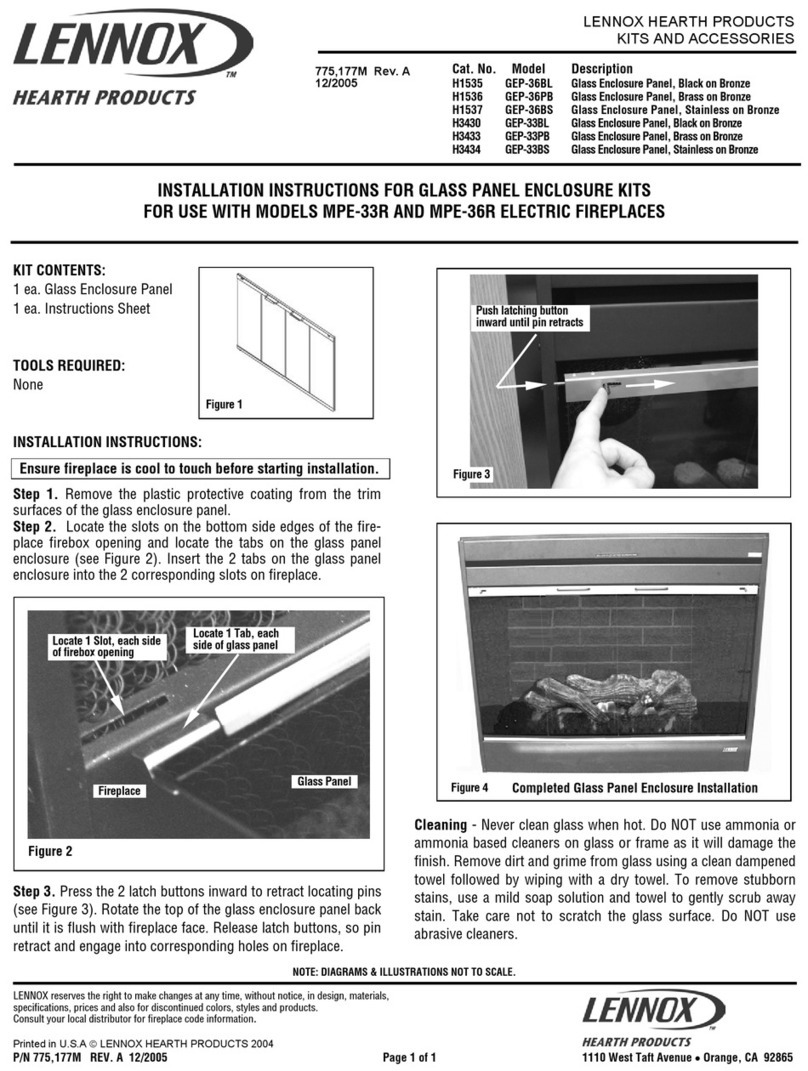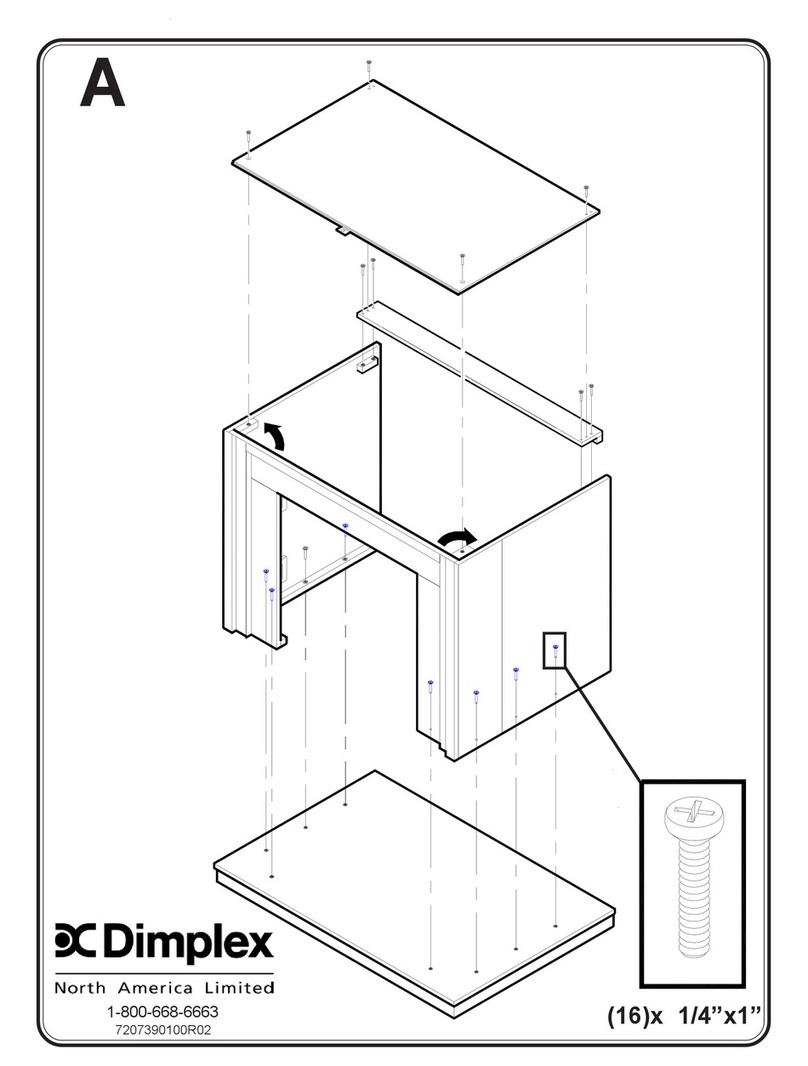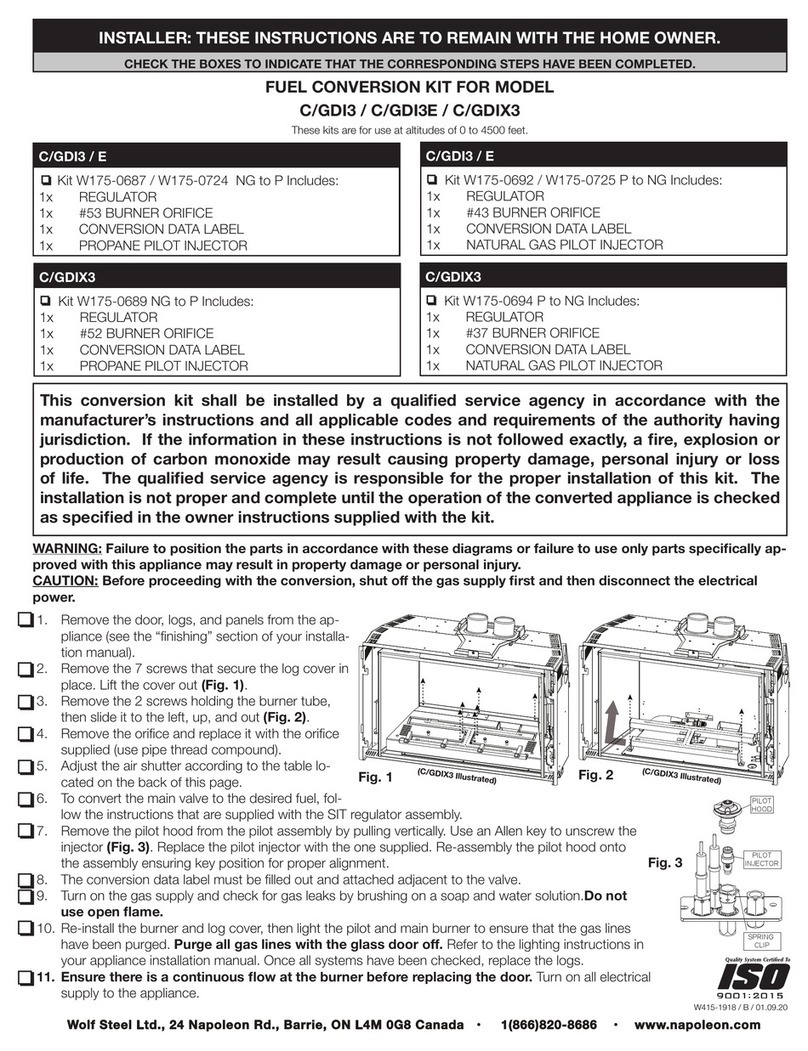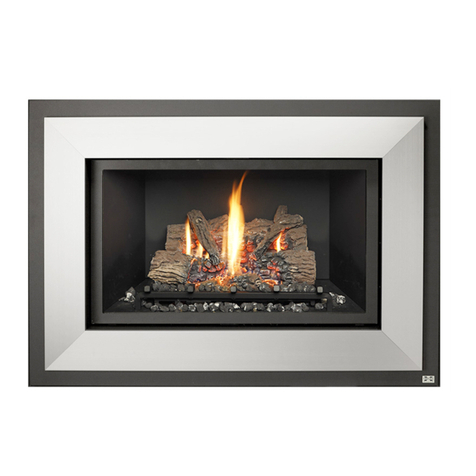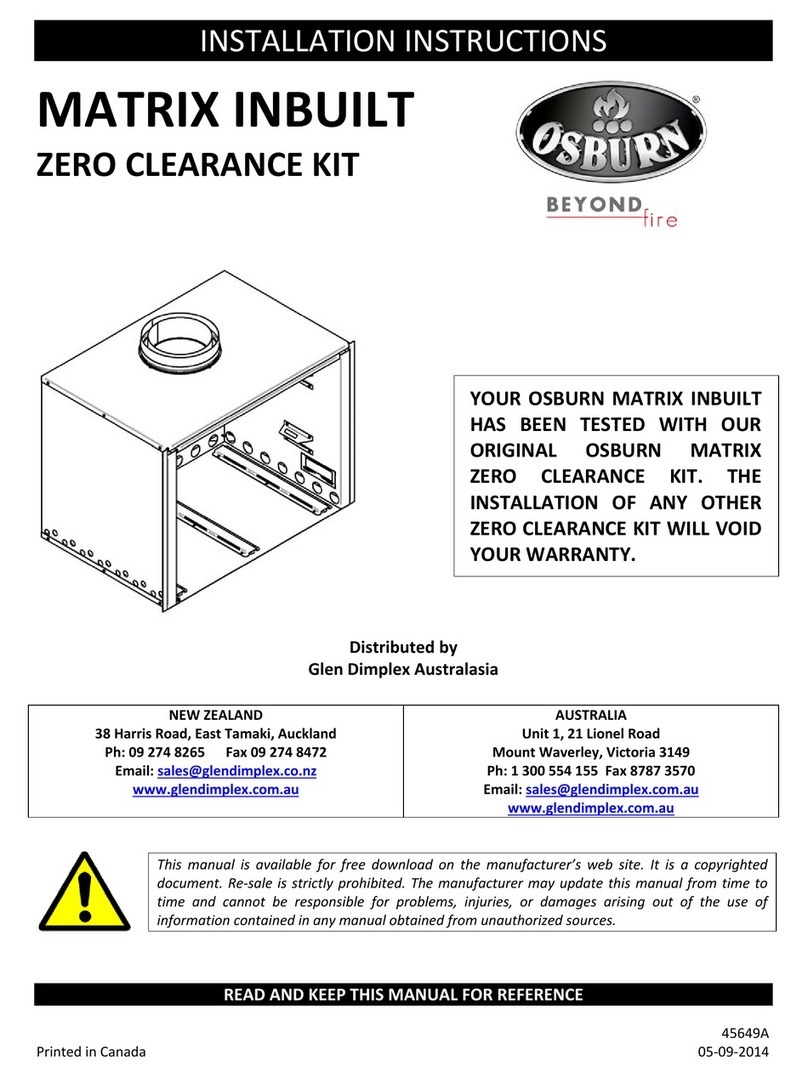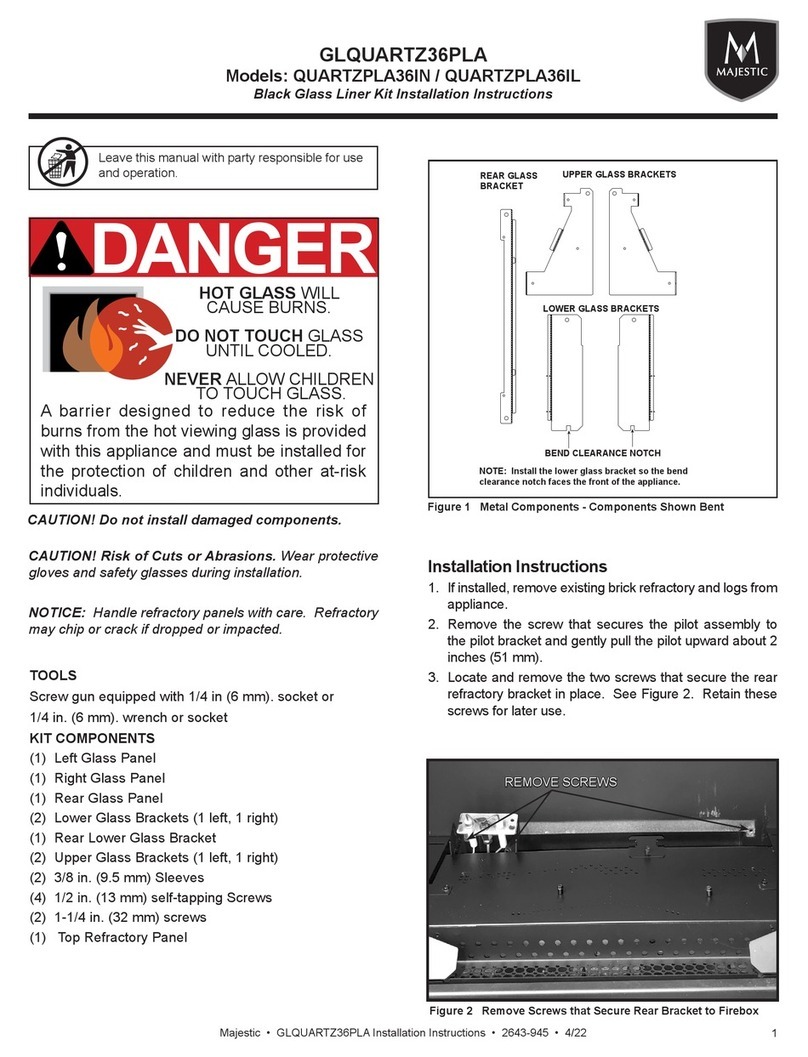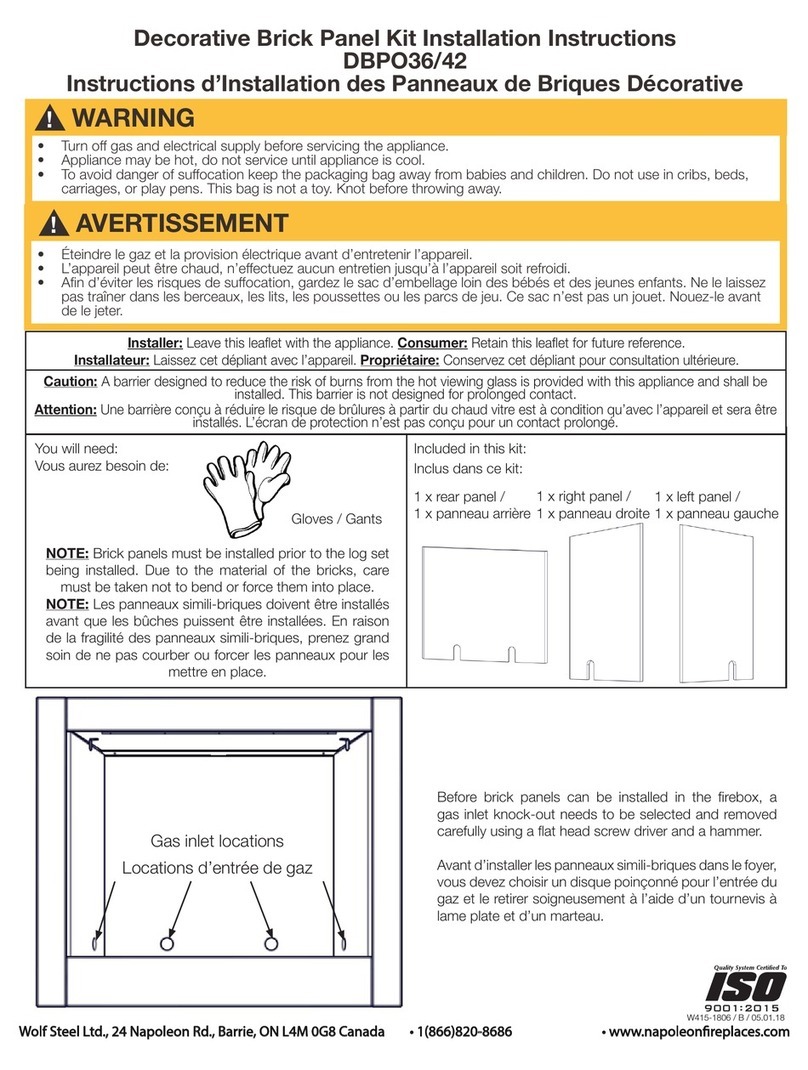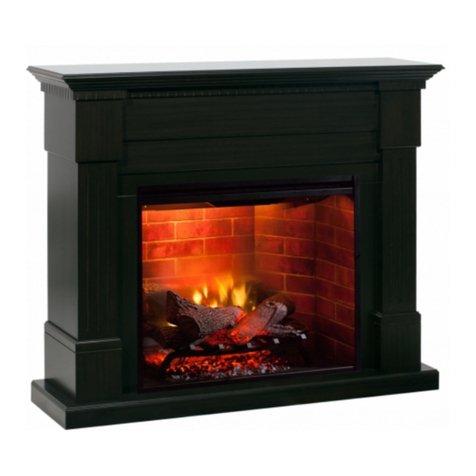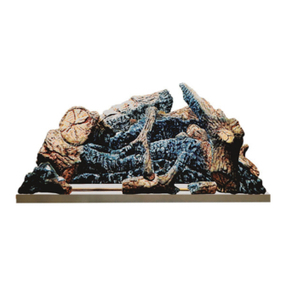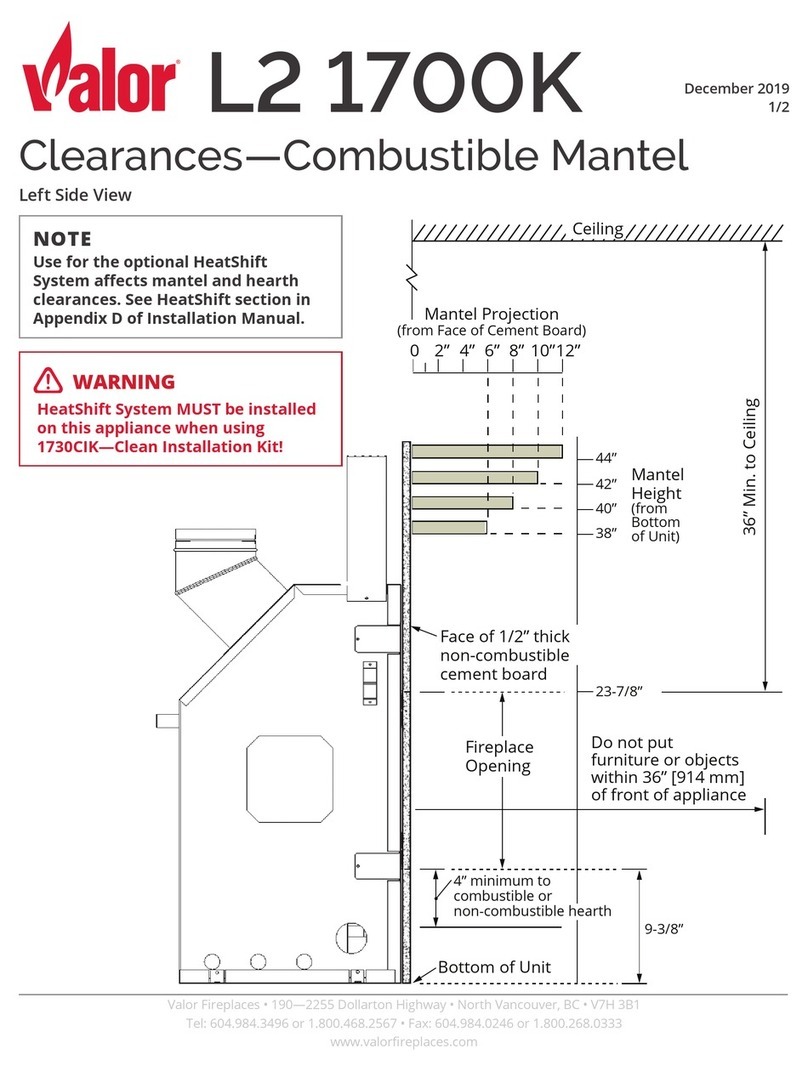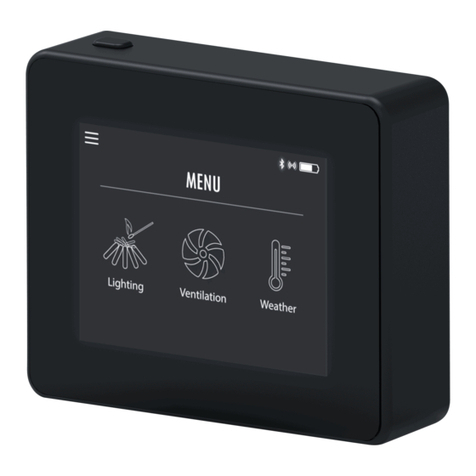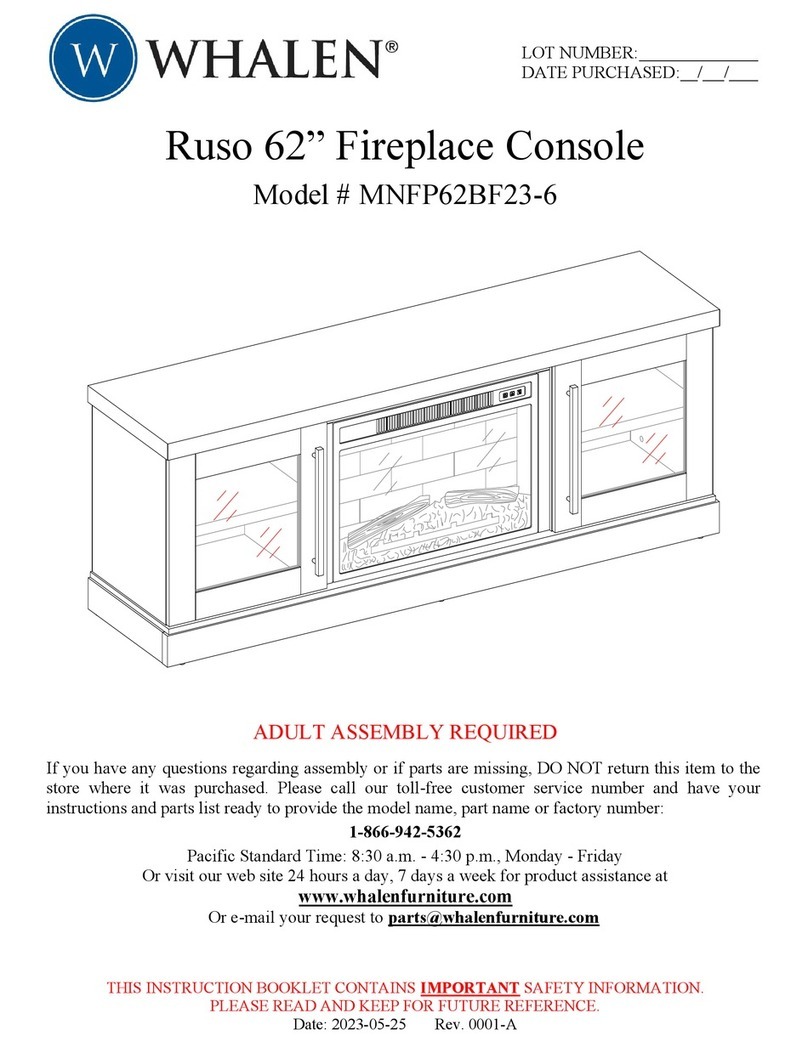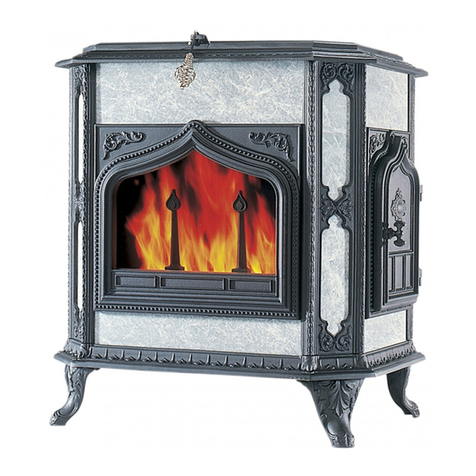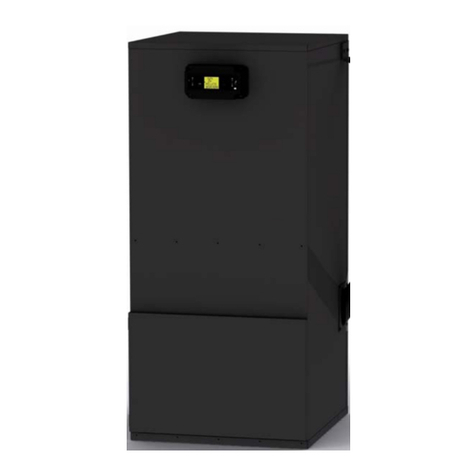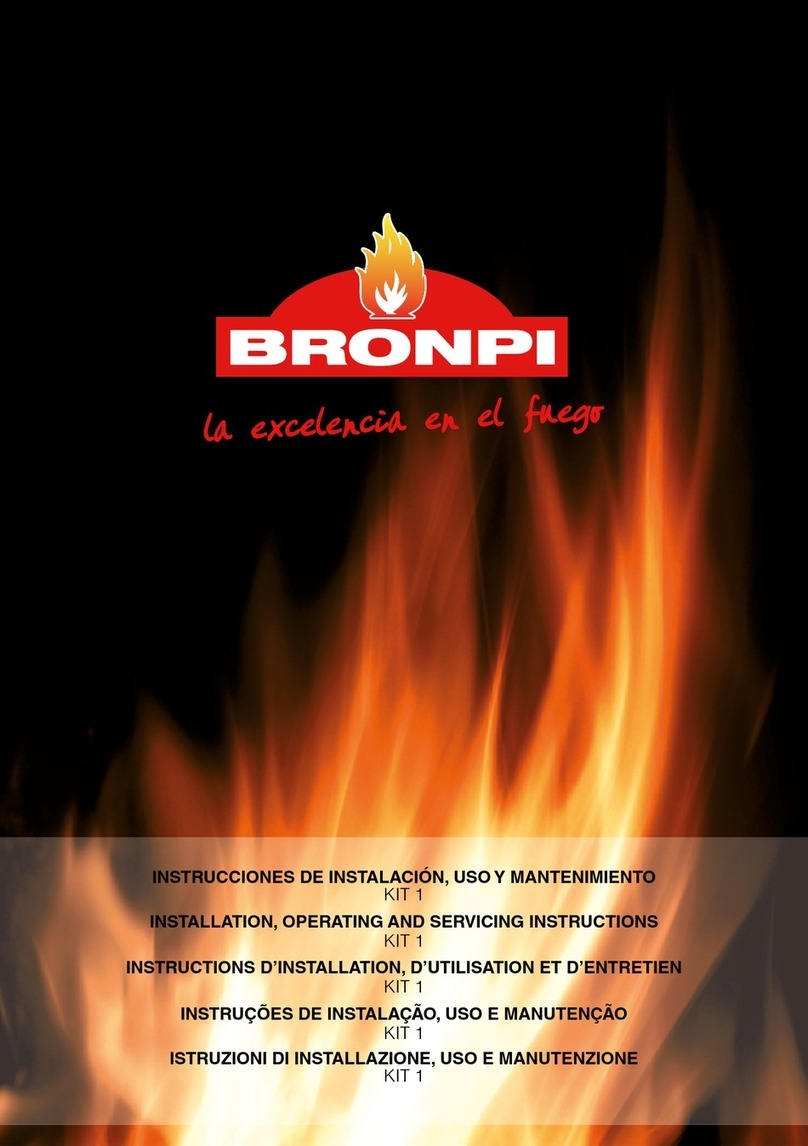
17
anchors and non-hardening sealant to secure
the Base to the masonry or bend base to
secure.
(g). Clamp. Pull the Pipe up through the Base
to the mark, which you made previously. Slip
the Clamp down to the mark, and tighten it
securely to the Pipe. The Clamp will then
support the entire venting system. Slip the
Storm Collar down over the Pipe Section,
and seal the joint with a non-hardening high
temperature RTV.
(h). Horizontal Pipe Section(s). Run the
horizontal Pipe Section(s) through the hole
in the masonry, and connect it rmly to the
Tee, either by reaching through the hole, and
holding the Tee while twisting the Pipe Section,
or by holding the Tee through the access door
while someone twist-locks the Pipe Section to
it. Use anAdjustable Pipe Length as needed
to obtain a specic location for the appliance.
Make a mark on the horizontal Pipe Section
ush with the vertical face of the masonry, for
referencing the vertical position. Slip a Pipe
Collar over the horizontal Pipe Section and
install the remaining ttings as shown in Figure
30. Aminimum of 12 inches of connector rise
is required.
(i). Insulation. Pull the Pipe Collar towards
the 90° Elbow. Fill in the gap between the
masonry and the horizontal Pipe Section with
ceramic ber insulation, as shown in Figure
31. The lling may be faced off with grout, if
desired. Push the Pipe Collar back ush with
the masonry. Make any nal adjustments
on theAdjustable Length Pipe (if used), and
tighten the clamping bolts.
TROUBLESHOOTING
1. Purpose. This section is intended as a
general maintenance and troubleshooting
guide, and as such, cannot encompass all
congurations or vent designs. For problems
encountered which are beyond the scope of
this sheet, contact your Simpson Dura-Vent
Dealer, Distributor, or Simpson Dura-Vent’s
Engineering Department. It is imperative that
the one-inch clearance (air space) dened in
these instructions be maintained. In most
cases, a one-inch minimum clearance must
be maintained to combustibles. The only
exceptions are 4-inch, 5-inch and 6-inch
Oval B-vent which are installed within stud
walls. Oval B-vent and BW Vent are the
subject of a separate installation instruction,
and are not discussed here. In these cases,
the clearances are established by the listed
Firestop Spacers described in the instructions
for Oval B-Vent.
2.Appliance. Read the appliance installation
instructions carefully, insuring that the
prescribed clearances are met, and that it is a
Category I appliance.
3. Spillage. Spillage from an appliance draft
hood may cause condensation on windows, or
odors that the occupant may notice. Spillage
may be caused by an incorrectly sized vent
system, blockage of the vent system, or a
downdraft in the vent. Other causes are:
excessive lateral runs, too many elbows,
improper pitch to lateral runs (1/4 inch per foot
of run is correct), fans or ventilation systems
in the same general area as the gas appliance,
or wind conditions at the vent cap.
4. Blockage. Check the system for blockage
by removing the cap, and looking down into
the vent with a ashlight. Check for bird nests,
debris, rodents, insects, or other obstructions.
If nothing is found, inspect the entire system
for physical damage.
http://www.northlineexpress.com





















